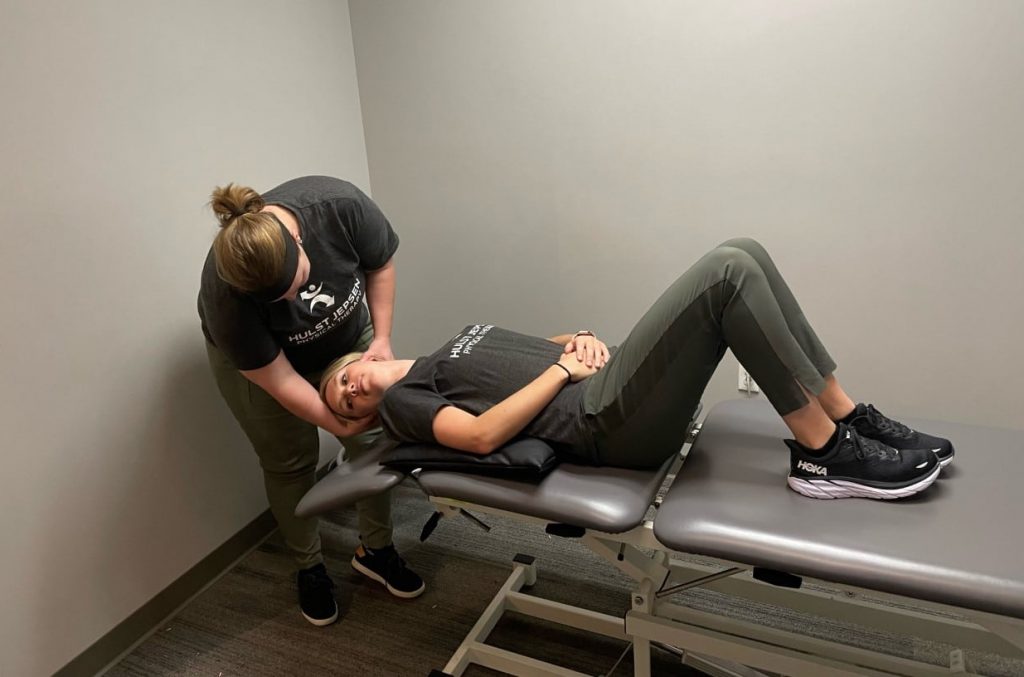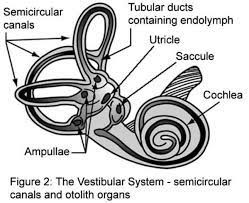Treating Vertigo

Did you know you don’t necessarily have to live with that dizziness you feel getting in and out of bed? Benign paroxysmal positional vertigo, BPPV, is a very common form of vertigo and one that is very treatable in possibly just a few visits! Vertigo can have several different presentations from making you feel dizzy or off-balance to nauseous, fullness in the ear, and spinning. There are two main types of vertigo: central and peripheral. Peripheral is when there are issues with the inner ear, such as with BPPV. Central is when there is an issue in the brain. 
 BPPV is caused when a crystal in the inner ear becomes displaced in one of the 3 semicircular canals. (image: owlcation.com). Think of these canals as the old-school bead maze for kids in doctor’s offices (image: walmart.com).
BPPV is caused when a crystal in the inner ear becomes displaced in one of the 3 semicircular canals. (image: owlcation.com). Think of these canals as the old-school bead maze for kids in doctor’s offices (image: walmart.com).
The bead is stable when it is at the ends but unstable with all the loops and turns. The same thing applies in the inner ear, the crystals don’t cause an issue when they are stable but while loose in the canals they cause those vertigo symptoms. That is where physical therapy comes into play. By doing a series of movements, turning your head and body, we are able to move those crystals from their unstable position to a stable one which should relieve your symptoms.
So how do you know if you might have BPPV? It is most commonly felt when changing positions such as getting in and out of bed, rolling in bed, standing up from a chair, bending over or looking up into a cupboard, and also when going to the dentist or hairdresser. It is usually a quick wave of symptoms that go away when you return to a stable position. You may feel a “weird” sensation in your eyes while this is happening like you can’t focus or may get nauseous. It may be something that seems like it comes and goes throughout the year and can get worse after an illness or when allergies are bad. If any of this sounds like you, even if it’s been happening for years, call your nearest Hulst Jepsen Physical Therapy and get a free consult! Frequently, straightforward BPPV can be resolved or at least improved in just a few visits, maybe even just one.
However, if you have vertigo or dizziness with movement that does not fall under these guidelines, it doesn’t mean physical therapy can’t help you! We can do a lot to work on balance and other physical issues that could improve your symptoms. What do you have to lose other than to try? Or at least talk with a physical therapist and see if he/she thinks you can be helped with therapy.
I frequently have patients come in with BPPV who have had it for years and tell me they “tried some exercises on the internet.” While yes, the common form of treatment for BPPV can be found on the internet in the form of the Epley maneuver or Brandt Daroff exercises. Depending on which of those 3 semicircular canals the crystal is displaced in, it requires a specific exercise to get correctly. By doing the wrong one you very well may further displace the crystal! So please, see a physical therapist first!!
If you or a loved one have been diagnosed with vertigo or feel you might have it, please don’t hesitate to reach out to schedule an evaluation or free consult with one of our physical therapists! Just call 616.256.8679 or visit https://www.hjphysicaltherapy.com/request-appointment/. We would be happy to help in any way we can!
References:
Benign paroxysmal positional vertigo (BPPV). Johns Hopkins Medicine. https://www.hopkinsmedicine.org/health/conditions-and-diseases/benign-paroxysmal-positional-vertigo-bppv. Published December 13, 2021. Accessed May 18, 2022.
Vertigo: What is it, causes, signs & treatment. Cleveland Clinic. https://my.clevelandclinic.org/health/diseases/21769-vertigo. Accessed May 18, 2022.
